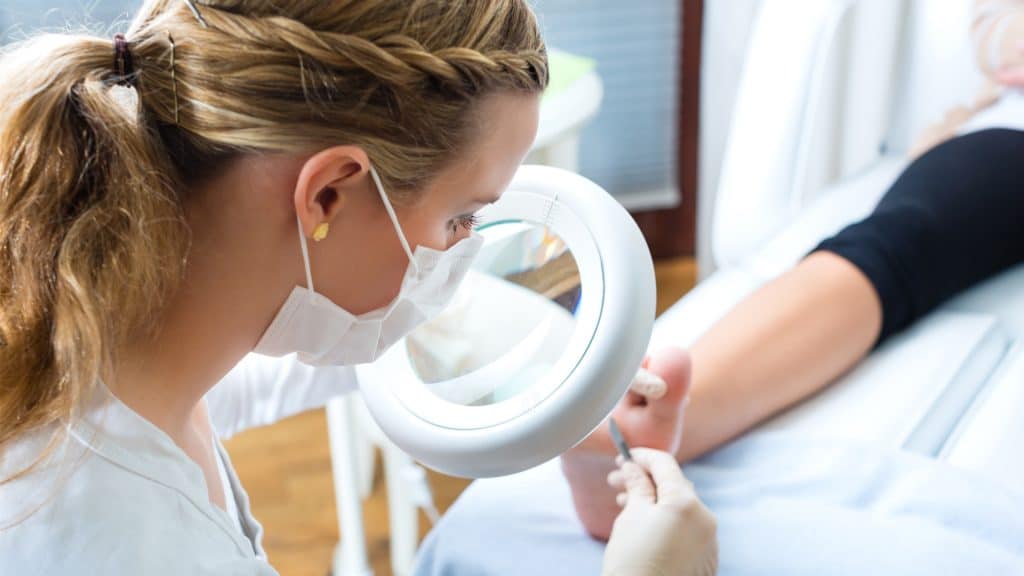Sarah Casey shares the benefits of student placements; for students, universities and clinicians.
Podiatry programs in Australia are expected to provide students with the opportunity to attend placements in a range of settings, including both public and private practices. Practitioners who offer a clinical placement opportunity to a student are providing the student with the opportunity to develop their skills in the workplace.
Benefits for students
This comes with a number of benefits:
- Students gain experience in the ‘real world’ outside university clinics, where appointments cannot take an hour or more, and where clinicians and patients sometimes have to juggle clinical considerations with financial and social constraints.
- Students get to experience different types of workplaces, in different locations. This can change (or confirm) a student’s career aspirations and planned geographical location.
Benefits for universities
Universities also see the benefits of students’ participation in placements outside the institution:
- External placement is an accreditation requirement – programs need placements to take on students in order for them to graduate.
- External placements can offer experiences and opportunities that students can’t achieve in the university’s own clinic.
Benefits for the profession
The podiatry profession also stand to benefit from the involvement of students in clinical practice placements:
- Currently, there is a shortage of podiatrists in Australia, particularly in rural and regional areas. As a profession, we need more podiatrists in order to maintain, and preferably increase the profile of our discipline. As podiatry programs move to increasing our scope of practice (particularly with regard to prescription of scheduled medicines), we need to ensure that we are the first port of call for any member of the public with a lower limb problem.
- Being able to provide students with a broad range of work and clinical experiences helps to develop the skills, attitudes and attributes of graduates. As the profession develops, it’s important that our workforce of the future understands the environment they are going to enter – complete with its challenges and strengths.
Benefits for clinicians
But what about clinicians – what do they get out of hosting a student on clinical placement?
- Hosting final year students, who can take on caseloads, can contribute to the productivity of the facility. It has been shown that taking students on placement can enhance productivity.
- Students can bring updated knowledge and theories, providing clinicians an opportunity to broaden and update their knowledge.
- Taking students on placement enhances opportunities for recruitment of graduates; directly by employing people who undertook student placement, and by promoting the reputation of your practice/department as a great place to work. This is especially advantageous to rural facilities that may experience difficulties in recruiting podiatrists. If you demonstrate that you are able to offer a graduate mentoring and opportunities that appeal to them, you are more likely to attract them to work in your practice when you need someone!
- Having students on placement provides a link with the university, introducing the possibility of research collaboration and research sharing. This link also ensures clinicians are kept informed of university seminars and professional development opportunities.
- Being involved in clinical education allows clinicians to be part of developing undergraduate curriculum and refining clinical education processes, e.g. participating in working groups and consultation processes.
- Students may contribute to their hosts’ professional development/CPD program. For example, final year students may work on special projects while on placement, that may not be possible otherwise. In addition, practitioners may choose to develop a program of activities for the student based on their stated placement objectives. This may involve a number of activities that contribute to the clinician’s professional development (and that can be recorded as such).
- Taking students on placement provides a valuable role in contributing to the profession of podiatry; we are a small discipline and it is important to ensure that we maintain the future supply of podiatry graduates ready to deliver the care the public need. If we can grow our profession, we have the potential to improve the standing and reputation of podiatry in the public eye.
- Being engaged with the placement process provides CPD opportunities, which is beneficial in terms of Ahpra registration as well as to our own development of skills and knowledge.
- Although there may be some costs associated with hosting a student on placement (for example, through having to slow down appointments), it represents a relatively low-cost way to engage in aspects of CPD that cannot be gained in other ways. From personal experience, I know that a really good way to bolster your own knowledge and practice is to teach someone else how to do what you do! It can also be a great way to remind yourself of where your strengths lie, and to identify where you could stand to improve (which feeds in to the CPD cycle).
A final note
It is important to acknowledge the concerns of practices who are considering taking students, particularly around the potential for a student to cause disruption and additional workload for placement hosts. Universities understand these concerns, and will work with hosts to reduce the likelihood of problems occurring, and to deal with any difficulties promptly if they arise. One of the most effective ways to minimise problems, in our experience, is to clearly set out expectations at the outset. Setting aside time on the first day or two for both parties to lay out what they need/would like to achieve from the placement can help to ensure that the placement goes smoothly, and that everyone benefits from the process.




